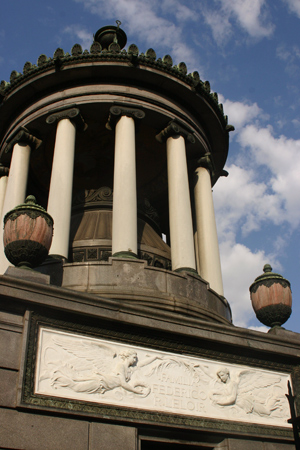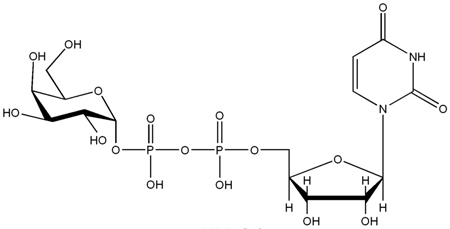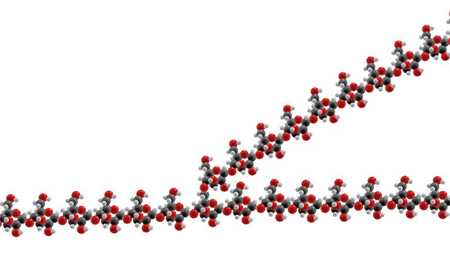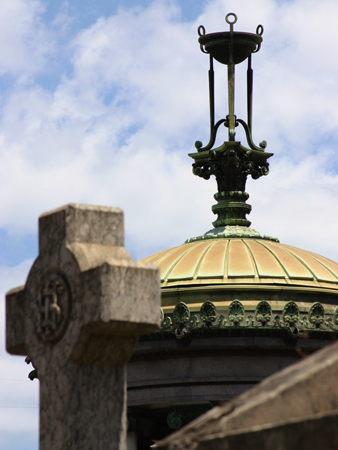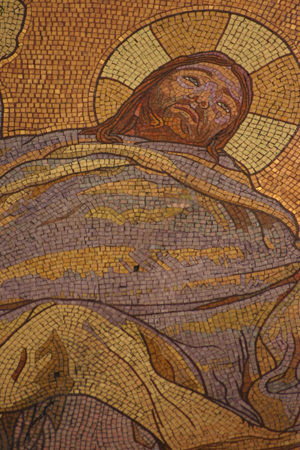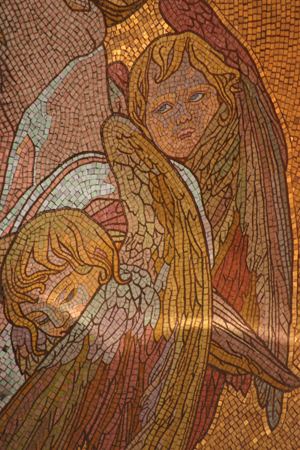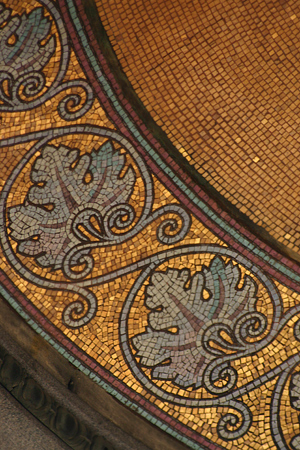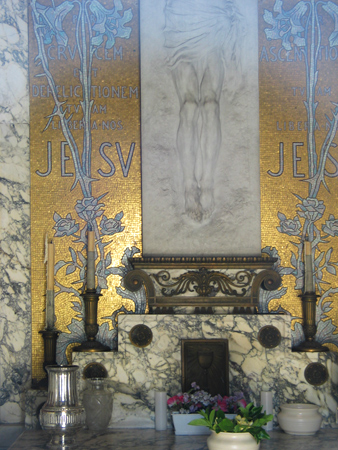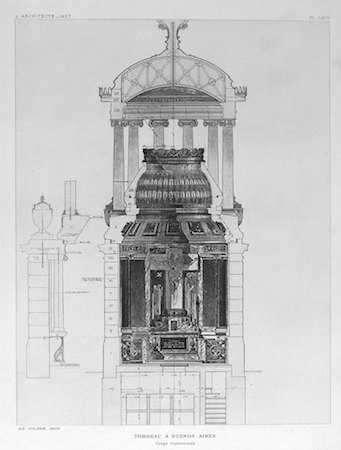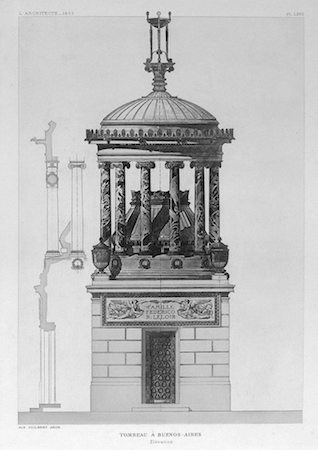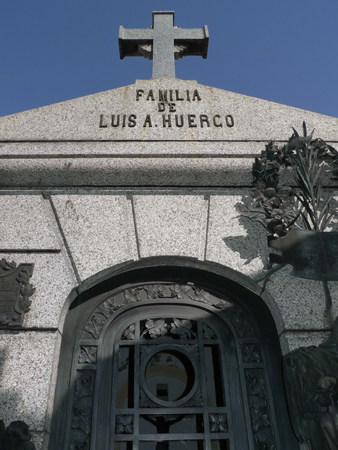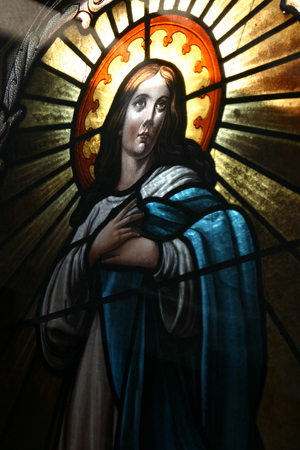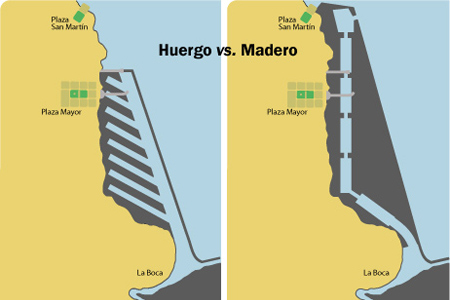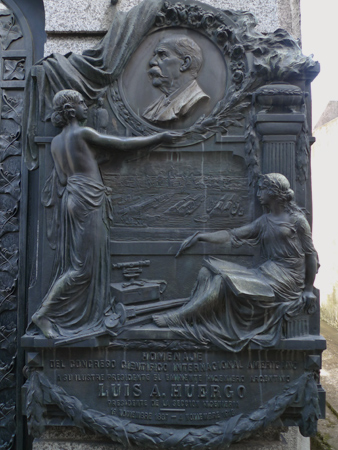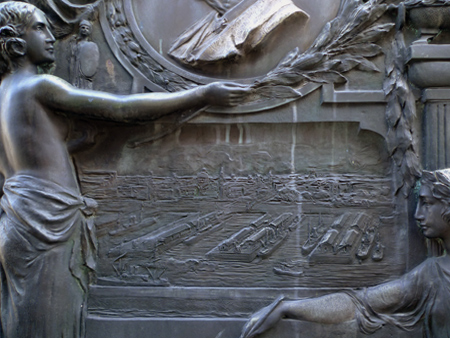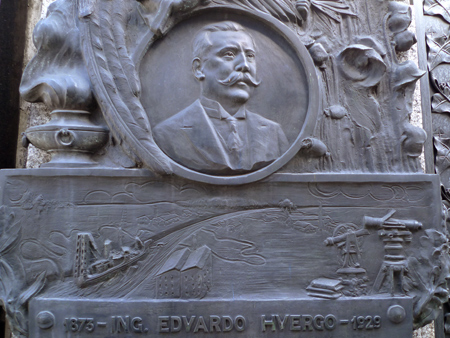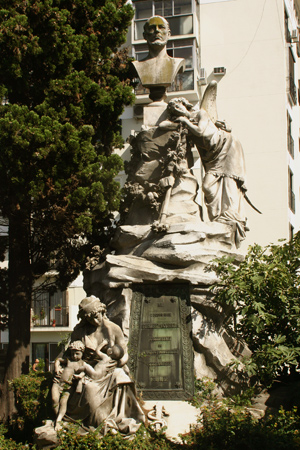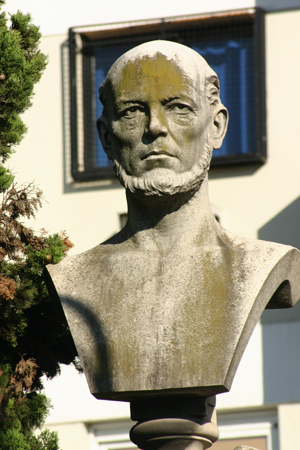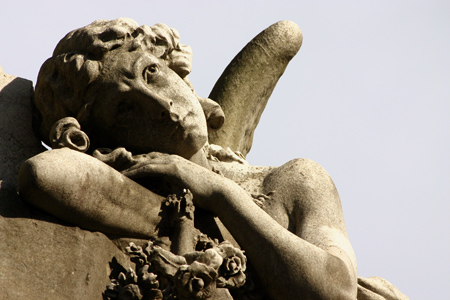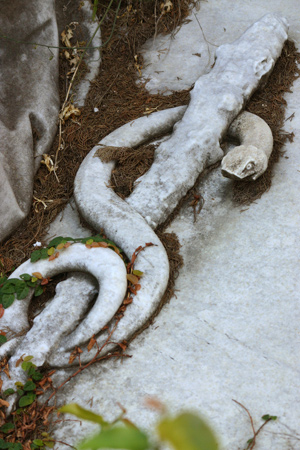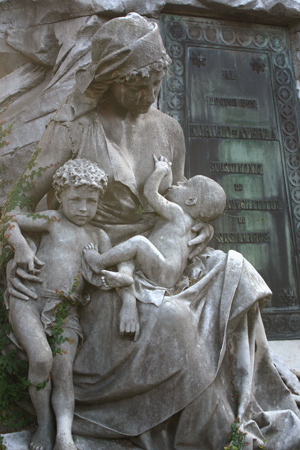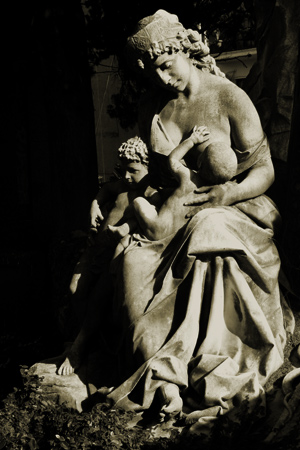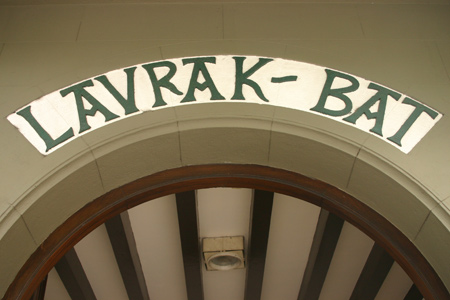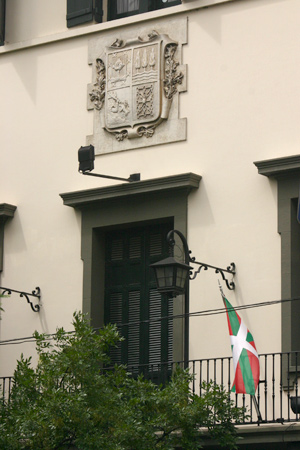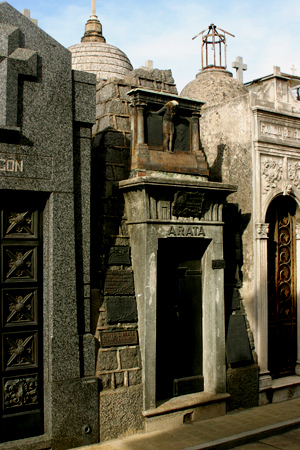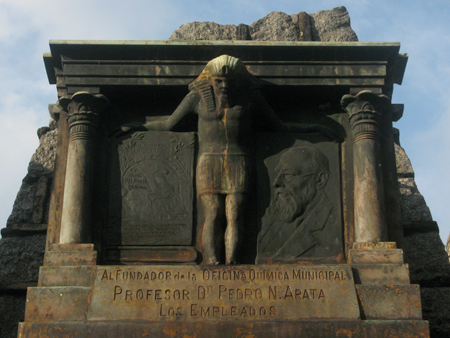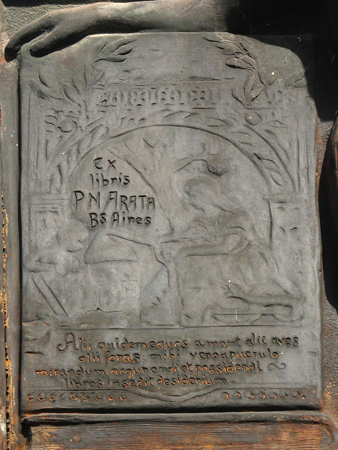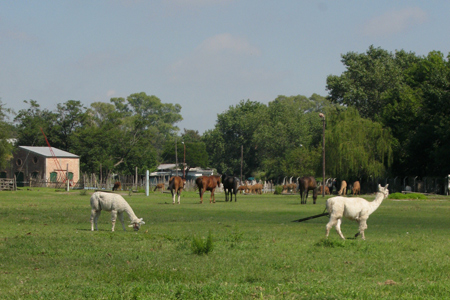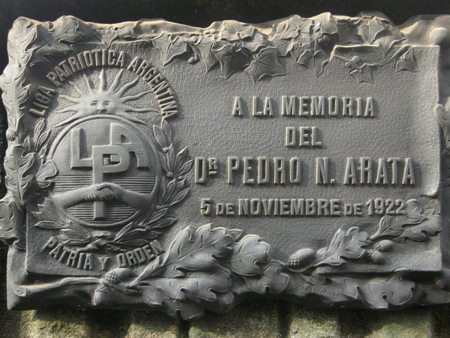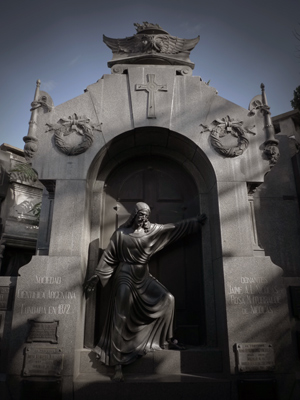
Group pantheons are rare in Recoleta Cemetery. Organizations usually choose Chacarita Cemetery while Recoleta attracts families & individuals. But given the social status of the Sociedad Científica Argentina, it’s not surprising they’re here.
During the 1850’s & 1860’s, medical & scientific societies formed—often with a very specific field of interest—in order to advance progress in these areas. As a relatively new nation with many issues to resolve, science often took a back seat. University students decided to change that. While still in the Department of Exact Sciences, students such as future engineers Luis Huergo & Santiago Barabino found support in their older peers, like Germán Burmeister, to found the society in 1872.
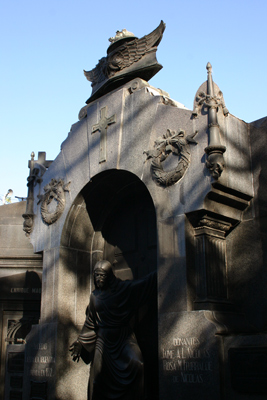
The SCA encouraged the study of science through a series of expeditions & conferences. They partially funded Francisco Perito Moreno’s groundbreaking research trip to Patagonia & hosted important international conferences in 1898 & 1910. By the 1920’s, the organization had become so respected that the city government ceded land on Avenida Sante Fe in Retiro for the SCA to build their headquarters:
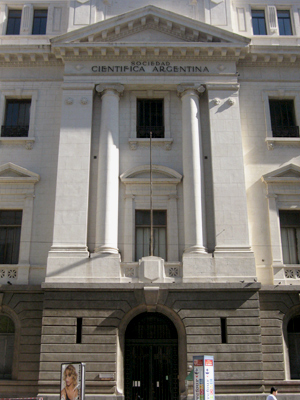
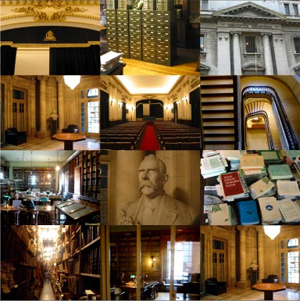
Still an influential institution today, members can opt for burial in the society’s pantheon. Numerous plaques list some of the occupants, such as analytical chemist Reinaldo Vanossi & biophysicist Máximo Valentinuzzi. The statue of Christ is the vault’s most outstanding feature & often has flowers placed at its feet.
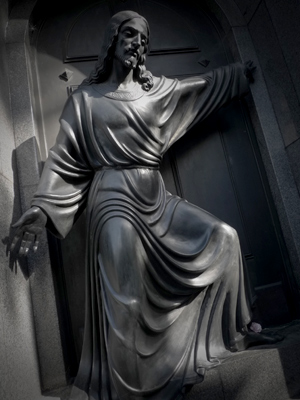
Interior photos courtesy of the Sociedad Científica Argentina.
2 Comments